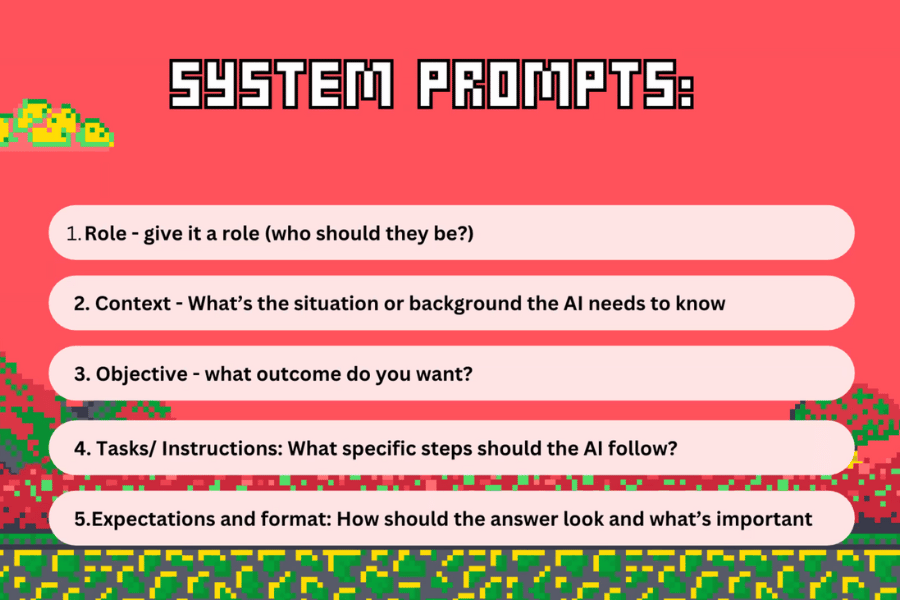How to Build AI Teammates That Actually Move Your Business Forward
A Businettes webinar recap with Cien Solon, Co-founder of LaunchLemonade
Artificial intelligence can feel exciting and slightly terrifying at the same time. Most founders hear the word agents and imagine something futuristic instead of something that could genuinely clear five to ten hours from their weekly workload.
In our recent Businettes Academy session, Cien Solon from LaunchLemonade broke the whole thing down in a way that finally felt usable. Her approach is founder first. Practical instead of flashy. Focused on outcomes instead of hype.
Here is the full recap.
From burnout to building something of her own
Before LaunchLemonade, Cien spent years leading product teams in fast-paced FinTech startups. She helped scale one product to three million users and learned how to build systems that work in heavily regulated environments.
Then life shifted. A personal shake up. A career ceiling. The sudden rise of generative AI. Staying where she was made less sense than trying something new. So she built her own product from scratch. No funding. No financial cushion. Just curiosity, experiments and the sense that she had nothing to lose.
Two years later LaunchLemonade has more than six thousand users across one hundred and fifty countries and recently hit $22,000 in monthly revenue. All bootstrapped.
What AI agents actually are
The idea of artificial intelligence has been around since the fifties. What is new is how easy and powerful it has become.
Cien explained it simply. You take a strong language model. You give it structure, context, tools and access to your own knowledge. Now it behaves more like a teammate that can follow instructions and complete real work instead of spitting out one-off replies.
This is what makes it agentic.
Step 1. Treat your AI like a hire, not a gadget
Most people obsess over model names. Claude. GPT. Gemini. Grok. It does not matter until you decide the role.
Cien uses a straightforward framework she calls R C O T.
Role
Context
Objective
Task
Expected output
If you hired a person, you would brief them properly. AI needs the same clarity. The sharper the job spec, the better your AI performs.
Examples include:
writing blogs and newsletters
research for competitor analysis
debugging code
creating images or video
producing social content
Choose the skill. Then choose the model best at that skill.
Step 2. Give it your knowledge
This part is where almost everyone falls short. People assume the model knows enough already. It does not.
When you attach your brand guidelines, tone of voice, website pages, product information or financials, performance changes instantly. The AI stops guessing and starts behaving like a teammate who actually works in your business.
Step 3. Build a system instead of copy pasting prompts
Most founders use AI like a chat window. Endless prompting. Endless back and forth.
Cien showed how she moved away from that and built a full team of AI assistants.
A campaign strategist
A blog writer
A social content producer
A developer coach
Accounting support
Sales support
A super agent that lets multiple models debate and solve a task together
Her weekly routine takes about twenty minutes. She gives the AI team updates and they handle content, research, outreach and planning in the background. They even build proposal decks by analysing meeting transcripts and pushing content straight into Canva.
Step 4. Choose a North Star
My North Star was revenue. Every agent I built had to support that goal.
No distractions. No building things because they are trendy. She focused on tasks that actually drive growth: Content and sales.
At one point she was posting one hundred and sixty seven pieces of content per week with the help of her AI team. That is how she scaled her user base to six thousand without paid ads or fundraising.
Step 5. Let the models collaborate
One of her most interesting examples was a prospecting tool she built using four models at once.
One model finds companies.
One collects detailed information.
One runs a SWOT analysis.
One writes the outreach message.
Each model does the job it is best at. The result is sharper and more useful than forcing a single model to do everything.
This collaborative setup is where AI becomes genuinely powerful for founders.
Data privacy and security
Because LaunchLemonade licenses models at enterprise level, user data is not used to train the underlying models. Everything is encrypted and isolated, with protections against prompt injection and attacks. This matters for any founder handling client information or working in regulated spaces.
Where to begin
If the whole thing feels overwhelming, Cien suggested two simple entry points.
Choose your goal. Growth, revenue, consistency, operations.
Choose your biggest day to day pain point. The task you hate but cannot ignore.
Start with one agent. Build slowly. Add more once you see value.
The one agent she wishes she built earlier
Someone asked which agent she would have built sooner. Her answer was the LinkedIn one.
She downloaded her full LinkedIn data file, fed it into an agent and suddenly all the forgotten investors, suppliers and warm contacts reappeared. No cold outreach. Just the network she already had, mapped and ready to use. Here’s more info on this specific agent.
Try it yourself
If you want to try LaunchLemonade, you can get twenty percent off with the code BUSINETTES20.
And if you want to stay close to our workshops, founder sessions and practical training for women building early stage businesses, subscribe to the Businettes newsletter. It is the easiest way to stay in the loop as we continue rolling out resources for founders across the UK, Germany and France.


